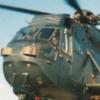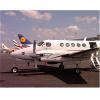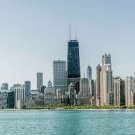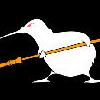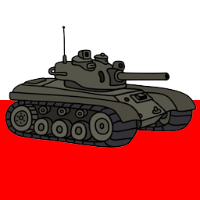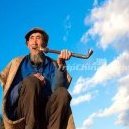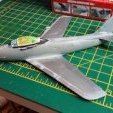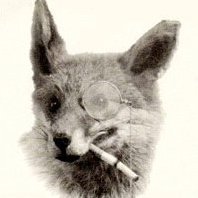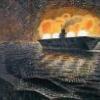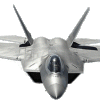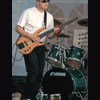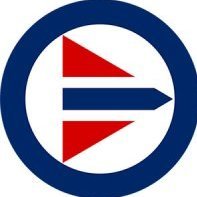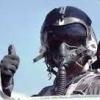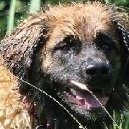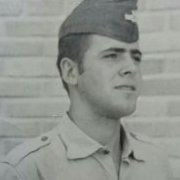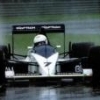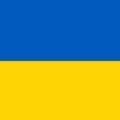Leaderboard
Popular Content
Showing content with the highest reputation on 13/08/19 in all areas
-
Inspired by the recent GB Douglas Dakota group build I eventually decided to throw something together for a change and chose this rather bright Dak of the French Navy.They were operated by 56 Squadron from Nimes.I recall seeing their aircraft at Luton and Jersey. Its the Airfix "new tool" kit with some minor modifications.The hatch over the flight deck was added from plasticard and a trim tab scribed on the starboard aileron.The original astrodome cut out was filled and a new opening made further down the fuselage.The aircraft's main role was training Navigators hence the bubbles location over the main cabin.The Exhausts were also opened out. Aftermarket resin wheels from quickboost were used as I feel the weight on tyres effect has been overdone in the kit.A pannier was added under the nose,unfortunately their is scant reference material regarding the item but I believe it houses ariels.Numerous ariels were made from plasticard of came from the spares box. The decals are Xtradecal sheet 72-207.I wanted a different serial to that supplied(One of the aircraft I had seen) so bought a set of numerals by tech mod which proved impossible to use,by me at least, even after a coating of Klear.Fantasy print shop came to the rescue with a very user friendly set of decals. The kit requires a certain amount of fettling to go together mainly around the spar centre wing area and the Cockpit side windows are best installed prior to closing the fuselage.Talking of transparencies I used a Pmask set for masking which were excellent. The kit was finished with a mix of Tamiya and Humbrol acrylic rattle cans.The original aircraft were a painted silver which is much easier to replicate than bare metal.29 points
-
27 points
-
Hi, Been a while since my last posting. Kind of lost my mojo after I threw the Tamiya Sea Harrier kit away because it just beat me !! .. will start saving for the Kinetic version. In the meantime , found this 1:48 F16 in Home bargains for about £5 but it was the "Thunderbird version " but with an Air National Gaurd option, so here it is. All OOB and the only change was to paint the canopy with a gold tint. Cheap kit and probably not accurate but it looks like a F-16. Main issue was the canopy fit, it was warped so had to use quite a bit of filler to make it fit. Painting the canopy was new and worked better than I thought. Also, got a new airbrush and well happy with it. So much so, I liked using it so much, I managed to cover up all the pre-shading.. Lots of techniques learned and re learned with this cheap kit. Now on the hunt for a decent Lysander Cheers Happy Modelling17 points
-
After what seems like a long gap, finally finished the Defiant; basically OOB with some added seatbelts and rivets, which I tried to keep as subtle as possible. There are three shades of black in use here, but you can hardly tell of course. These nightfighter variants seemed to end up looking very tired very quickly, so I was happy to have mine look fairly battered.15 points
-
I have finally finished the pair of Pfalzen. The first, an ICM E.IV was built a few years ago and got damaged during my relocation. I decided that the restoration would be more interesting if I took the AZ Models E.I out of the stash and built that alongside it, so that's what I did. They are both 1:72 scale, and both heavily modified from the basic kit. The E.I has scratchbuilt wings and tail surfaces, while the E.IV's are heavily modified kit parts, and both have scratchbuilt undercarriage. Part PE was used for the E.IV guns and the E.I has a MiniWorld gun. Here's the build log for anyone interested. Before the war, Pfalz had obtained a licence to built Morane-Saulniers, and that's what they continued to do after the war broke out. (It is said they made good on every penny they owed M-S after the war!). So all the early Pfalz aircraft were basically Moranes, and that is what they were called by the German pilots who flew them. They were also called "flying death notices", due not just to their black outlined wings and fuselages, but also because they were regarded as "difficult" and the early models suffered quite a few tailplane structural failures, many with fatal consequences. The E.I had an 80hp Oberursel U.0 rotary engine and the various models following that basically had bigger engines and wings, to the E.IV which had a 160hp Oberursel U.III engine. There were a few E.Vs with in line engines but that was basically it as Pfalz had not put any effort into designing their own aircraft and by mid 1916 the old M-S design was well outdated. The company continued on building aircraft under licence from other manufacturers (Roland for example) but they did not build their own aircraft again until the D.III came into service in 1917. The E.I depicted here served in Vilna (Vilnius, Lithuania). The serial number on the fuselage is correct as per photos, at least on the port side. I'm not sure if the way I have shown it on the right side is correct as I had to move the cross forward slightly. It would make more sense to have the "/15" in front of the cross, but who knows whether it was or not. The E.IV depicts an aircraft flown by Rudolf Bertholt whilst with Kampfeinsitzer (literally battle single-seater) Kommando, Vaux, based in Vaux, on the Somme, France in April 1916. He suffered serious injuries when the Pfalz reputation caught up with him and he spun it in from 100 metres. He survived that, and quite a few other injuries received during the war, only to be killed in political street fighting in Hamburg in 1920. He was so badly beaten he couldn't be identified physically. I guess that's what you get when the civilians you're shooting at catch you! Anyway, here they are... They look quite comfortable next to each other in the cabinet! I hope you like them! Ian14 points
-
Consider the aspect of this chubby little fella. And consider that this was 1922, four years after WW1, and that for many, many years, biplane and even sporadic triplanes would populate the sky. Progress always finds reluctance. Another civil jewel from Avis. Good detail, very smart engineering, care taken on achieving small and less intrusive sprue gates -unlike some short-run kits that have thick gates-, thought put into the breakdown to avoid sinkholes, nice interior detail, attractive an unusual type, reasonably priced, surely a superb subject choice. These last releases by Avis are indeed remarkable upgrades on the short-run theme, and if it's true that they are not snap-together, the level of detail and care in the engineering and molding makes them the best so far I have build in that category. Needless to say the subjects are wonderful which for me makes for a complete modeling happiness package. The step-by-step build is here: And so here it is, a racing oddity that promised much but did live up to the expectations. Enclosed engine, retractable landing gear, monoplane, monocoque fuselage, all very advanced choices for 1922 no doubt, that unfortunately due to other problems was not to be the winner the designers and builders thought would be. In any case, who can resist the plumped charm of this eccentric aviation one-off? The kit needs some touches here and there, but it is a noble kit, and I had fun building it, not to mention looking at it! Well done Avis, for more! I would say: take it a bit further and please give us a piggy-like Vickers Vulcan*, or a De Havilland DH18 or 34**, or a Westland Limousine***. But if you want to stay in line with the current trend, I would take a Helmy Aerogypt**** any day! (I wouldn't mind a Gloster Mars racer, but my suspicions are that you may come up with a Short Mussel in land and water guises) *https://media.gettyimages.com/photos/type-16-vickers-vulcan-a-british-singleengine-biplane-airliner-built-picture-id805113970?s=2048x2048 **https://media.gettyimages.com/photos/sir-samuel-instone-and-codirectors-pilots-and-mechanics-of-the-air-picture-id2666638?s=2048x2048 ***https://media.gettyimages.com/photos/circa-1920-a-wedding-party-bid-farewell-to-the-bride-and-groom-at-an-picture-id3336034?s=2048x2048 ****http://www.aviastar.org/air/england/helmy_aerogypt.php12 points
-
Hi, everybody! It's my next model from excellent "Hasegawa". I used two etched set (interior+exterior) from "Eduard" and "Miniworld's" gun barrels.12 points
-
Hi Folk's yes another Frog oldie built for the ongoing GB,Westlands Wessex in Royal Australian Navy colours,this is a seventies boxing but the kit was released in 1963 so if you are compelled to try one don't expect a shake and bake kit! Many thanks for looking in.11 points
-
Thanks Giorgio and Keith The ventral mount got Dextered: …but it still fits too far in due to the plastic inside: …and the seam won't close: Sand, file, sand, fit, repeat and we end up with a part that looks like this: … and fits so that the turret will be vertical. Glued in. Turret clear parts have been assembled: And rear turret internals fitted: I'm sure you can see all the 'spare plastic' in that shot. It's been cleaned from the glued side and will be fettled to get a good seam. Later10 points
-
Being a "McDonnell" myself, I have a different heart when it comes to McDonnell Douglas aircraft. I had started this with the Jolly Rogers Phantom and have just finished it. Some riveting with a riveter and PE cockpit sets are the extras. Thanks for looking and your comments. John9 points
-
Finally got around to writing this up. This particular aircraft was operated by 1771 Squadron Fleet Air Arm (FAA) from HMS Implacable in 1944. It was lost during an attack on the Rorvik port in Norway on the 26 October 1944. The pilot Sub Lt R.M Shaw (RNZN) and his observer Sub Lt G.M. Smith were killed during the attack. Full details with more photos at my blog but here's a couple of photos9 points
-
The old Matchbox kit of the MiG-21 built in Soviet markings. A very simple kit, but my main problems happened, after it had an encounter with the floor and parts like the undercarriage did not survive it. The undercarriage was not all that strong to start with. Sourced a MiG-21 undercarriage from the spares box. This kit is also lacking missiles, so had some Eduard AA-1 Alkali missiles with pylons handy, part No 672192. Painted overall Tamiya X-11, but a section of wing had to be touched up and despite my best efforts, it came out different to the rest of the paint. Decals are from Linden Hill sheet No LHD72033. MiG-21PFS-70 by Ryan Hothersall, on Flickr MiG-21PFS-71 by Ryan Hothersall, on Flickr MiG-21PFS-72 by Ryan Hothersall, on Flickr MiG-21PFS-73 by Ryan Hothersall, on Flickr MiG-21PFS-74 by Ryan Hothersall, on Flickr MiG-21PFS-75 by Ryan Hothersall, on Flickr MiG-21PFS-76 by Ryan Hothersall, on Flickr9 points
-
The Single photo update this evening, showing about 3 hours’ work! On the starboard side of the hull, beneath the island, are two shelves which supported Carley floats. Tetra replace the upper one with brass, so that was removed some time ago [it’s out of shot to the right of these pics - or will be in due course]. However, during my scuttle drilling / measuring / filling campaign I noticed that Merit have moulded the lower one too low on the hull. There follow some truly nasty, pre-clean-up macros, for which I beg forgiveness... people of a sensitive disposition should look away now. If you look here, you can just about make out where the moulded shelf was - half way down the hull opening just visible on the right of shot. A quick look at photos shows that it was close to the top of that opening in real life. [Carley outside ring purely balanced for effect]. The thing that’s taken the time is the fact that the ‘shelf’ had a curved underside fairing it into the hull (anti-turbulence, possibly; they did quite a lot of work to minimise turbulence around the deck). This was fettled from a section of styrene tube of suitable bore, and took some considerable time - especially since there was a scuttle in the centre of it, so I had to do two similar sections. Here you can kind of see the end profile, which will be duly filled and refined once everything has set. I have also been experimenting with materials for replacement rectangular hatches - many of Merit’s are in the wrong place and/or the wrong type (e.g. those visible at top right above, which I haven’t bothered to protect during sanding since they’re coming off in the end anyway). The winner seems to be a choice between thin lead sheet and plumbers’ aluminium tape. But I forgot to take any photos, so you’ll have to wait for those! More later in the week Crisp9 points
-
Hi, This is a 1:35 model, the Elefant, German tank destroyer. This is Italeri KIT no. 0211. I made it as movable model. Additional parts are the Friulmodel tracks, towing cable and small accessories. I little modified the front fenders and replaced the shackles for a bigger one. At the bottom I added a short video how does the model ride. P.S. I just bought photo light tent and pictures of this model was taken in the my light tent for the first time. I forgot install an antenna in the model so I took couple pictures with it after I folded in my light tent models riding...8 points
-
Because of the way Airfix make and sell their kits these days, and because I’m old school enough to believe a kit will hang around the market for a long time, I missed the original release of the Blenheim MkIV in bomber form. Actually, I’m not sure I did, but never mind. I did the same with the MkIF. I missed it entirely, and by the time I bought a box it was branded as the bomber. Happily, all the parts needed for either a fighter or bomber were in the box, whichever version you bought. So, this rather convoluted introduction is by way of explaining why I’m building a MkIV as a bomber, but using a MkIVF boxing. Oh, and spare parts and the instructions from the MkI. It’ll probably become clear later. Don't expect this build to be quick. I’m only posting this now as a distraction from "proper" work, and it’ll act as a holding thread until I get started properly. ROYAL AIR FORCE BOMBER COMMAND, 1939-1941.. © IWM (CH 364) IWM Non Commercial License This photo of R3600 getting some TLC from her ground crew is my inspiration. The plane is in the standard mid- to late-1940 camouflage and markings. It has the early type of Fraser Nash FN.54 blister nose gun, and a terrier on the engine cowling. Apart from dog and ground crew, I have sufficient bits of set decoration in the form of vehicles and ordnance that I could have a stab at recreating something like this scene at a scale of 1/72nd. I don’t intend this thread to be a blow-by-blow account. This kit, in most of its variants, has been done to death by now. Instead, I shall cover things of interest, and anything that crops up along the way. Fairly obviously I shall need to source suitable markings, and I may hack some parts about to open the various hatches atop the plane. Otherwise, this will be a straightforward build which will add a Blenheim to my 1940 Bomber Command fleet.6 points
-
Here is my first completion for the FROG GB, a Modelcraft boxing of the original kit. I sanded off the raised detail and scribed the main panel lines, then continued the upgrade with a resin interior, a couple of RN 2inch rocket launchers and wheel set, a pair of Master pitots for the Sea Vixen and replaced the kit refuelling probe with a length of Albion Alloys tubing and a tip from a Master Buccaneer set. The underside was painted with Halfords Appliance White and the top colour was brush painted using Humbrol 123 EDSG. The decals and stencil data are a combination of the kit and a sheet from a Revell boxing of the Frog kit. I hope you like my attempt to improve this old kit. de Havilland Sea Vixen FAW.2 Royal Navy, 890 Squadron, XJ607:701-VL by John L, on Flickr by John L, on Flickr by John L, on Flickr by John L, on Flickr by John L, on Flickr by John L, on Flickr by John L, on Flickr by John L, on Flickr by John L, on Flickr by John L, on Flickr by John L, on Flickr6 points
-
This is my recently completed Fairey Seafox , L4526, 702 Sqn, FAA, HMS Asturias, 1942 Life started by using the dated Matchbox kit and was updated some what to include more detail: Cockpit deck added and seating positions corrected. The observers pit was updated with black boxes, MG replaced with Miniworld option and mounted on a corrected mount. Moulded-on landing lights removed and scratch clear options fitted. Oil cooler replaced by scratch option. Engine intakes hollowed out and scratch engines added. Moulded-on exhausts removed and scratch options fitted. Moulded-on venturi removed and resin option fitted. Control horns and lines added to float rudders. Flaps removed and fitted for 'landing'. Colourcoats enamel paints used externally and painted in the 'Shadow Scheme'. Some kit decals were used but roundels and codes were Xtradecal. Rigging was Uschi line. All mounted on a sea base depicting 'touch-down'! Work in Progress here: Thanks for looking. Comments and critique welcome. Stuart6 points
-
after I posted about one week ago my beloved 1/72 airfix bristol belvedere on the wrong forum-it was surrounded by a lot of very intimidating 1/35 armour ,the poor old veteran-I have taken extra care to post my 1dewoitine 520 on the aircraft forum. so I'm happy that I can show the result of my latest project,finished about a week ago . a 1/72 rs models Dewoitine D.520 in bulgarian service ,with roundels they had between 1945-1950 [if I'm not mistaken too much]. brush painted with humbrol enamels.....cockpit will be finished soon..6 points
-
Cheers chaps, Slow progress I'm afraid, the small size of the parts really brings things to a crawl. So the cradle is soldered up, 4 parts make this and it took a while. Ammo box holder, the wire 0.2mm is for the ammo box lock. again soldered up, the lock has another 4 parts to add yet. Newer style NATO ammo box, this has again been soldered up, the lid need the hinges folding yet and the lid locking catch adding to the end of the box. More later chaps Dan6 points
-
Yes, Stuart. The first time you mentioned the bandstand treads, I thought I might look at the possibility of fabricating them, but then when you brought them up a second time, well I could't let that go could I? It got me pondering how much more realistic they would make the bandstand look, and as I was already going to so much extra effort on that item, I might as well go for it. I realised the biggest issue if I did tackle them would be that once started, there would be no going back because of the nature of the beast - i.e. I wouldn't want to be removing them! After considering a few ways to tackle them, I decided they would need to be made from the finest stock strip or rod I had. In the end I went for some 10 thou micro rod which would partly lose it's cylindrical profile after the liquid poly used to attach them had worked its magic, and I thought that would look just right. The first challenge was how to make so many, to a consistent, if not exact length. The length chosen was 1.5mm. I would need 105 in all, and allowing for some failures decided to cut 120. My method was quite simple and basic. I cut off around 12 working strips of rod each to about 20mm in length, then laid them adjacent to each other on the sticky side of a post it note, which had 10 sections worth of treads marked out as shown below. I forgot to take a picture of the rods in place, but they all sat running left to right overlapping the left and right edges of the template. A very sharp razor blade was then used to chop through all 12 rods at a time, along each cut line, taking care not to let any slip. The glue on the post it note meant that none were lost to the carpet monster ..... yet. Working samples shown here, ready to be fitted. Making a start required a deep breath, a very steady hand and a willing spirit to place each one as accurately as possible, by eye. The process for each tread was challenging as I really only like using my right hand to position things precisely: 1. Pick up tread with tip of scalpel lightly pressed in so as not to cut through but enough to pick up, using my right hand. 2. Lay scalpel gently down to enable right hand to apply glue. 3. Take brush of ultra thin cement and dab into position on bandstand base, using right hand. 4. Carefully put back into cement jar. 5. Pick up scalpel loaded with treat and VERY carefully place into position, holding for a few seconds and then letting go. Repeat above 105 times! at this stage in the proceedings, I remember thinking, this is not so bad........ By the time I had got to this stage, I remember thinking, why on earth did I do this.... But as you can imagine, when I got to this stage, I was feeling pretty damn pleased with myself! And then a quick test with the Oerlikon plinth in place, just to see if everything looked right: Once that stage was out of the way I could then attach the brass etch supports, using the set that gave the forward tilt to the whole platform: I'm pretty happy with all that now, and a quick test fit onto the deck of the Vosper showed that it will sit pretty well, with its forward tilt, after a bit of fettling of the supports and the deck itself. I did a quick tally and I reckon that once the Oerlikon is fitted, and all of its detail parts, the whole affair (bandstand plus gun), will consist of over 150 individual parts! Next step is to sort the above so that it fits firmly to the deck (on final assembly), then start to look at some of the other deck fitting such as vents and other minor deck details, also there is further work to be done on the bridge structure. Terry6 points
-
Thanks for all the kind comments guys - it makes all the difference - so much nicer than building in solitude - I guess that's why they call it a 'group' build Hi Robert - I'm just scouting through my pictures with the idea of doing a re-cap in the diorama section and then adding to it. I need a roadway as a bare minimum - but ideally I would like a few more buildings too - we shall see... Thanks Ozzy - I really struggled with the faces and in the end they were so full of flesh paint that I lost all the detail - but I really enjoyed them - so I will be doing more soon - with the idea of improving my technique. Aye up yourself Steve - thanks mate and if you know where I can find 1/35 scale cat pooh let me know Ozzy - the GB has been run very well and has been very good natured. You may remember I had my doubts about joining as I initially confused @PlaStix with another member - I'm glad I realised my mistake and joined in. Hey Stix - I have been 'shopping' for a few more 1/35 kits. I'm just about to start a 2 week holiday & I hope to get something going over the break. Hiya Pete - I like the idea of a 'night shot' - maybe with even more directional lighting to form hard shadows - sadly the only reason mine looks this way is because the kitchen top is black marble and the only board I could find to hide the tiling under the units was also black DOH!!! Thank you Sir - I promise faithfully to build an aircraft soooooonnnn...6 points
-
I believe it's 1/48th scale? It's a magnificent model. I have a complete photographic walk around.6 points
-
This is my recently completed Fairey Seafox 'H9A', 713 Catapult Flight, HMS Arethusa, Kalafrana, Malta, 1939. Work in progress here: Life started using the dated Matchbox kit and was updated some what to include more detail: Cockpit deck added and seating positions corrected. The observers pit was updated with black boxes, MG replaced and mounted on a corrected mount. Molded-on landing lights removed and scratch clear options fitted. Oil cooler replaced by scratch option. Engine intakes hollowed out and scratch engines added. Molded-on exhausts removed and scratch options fitted. Molded-on venturi removed and resin option fitted. Home brewed vacuformed glazing for rear pit fitted. Control horns and lines added to float rudders. Flaps removed and fitted for 'landing'. Painted overall with Tamiya AS12 rattle-can. Kit decals were used except for the black wing markings that were painted. Rigging was Uschi line. All mounted on a sea base. Stuart5 points
-
Oh, I forgot this photo: This is the front cockpit rear bulkhead part from Airwaves cut down to fit in the T.3 cockpit. It didn't fit (someone warned me). Cheers, Bill5 points
-
Indeed! We should all bow down and offer sacrifices to @Procopius. Truly the God of Discovering Resin Obscurities Unknown to Fellow Modellers. HPM shipped mine the same day I ordered it. Very nice, now we'll see how DHL performs. You should get an ultra-quiet compressor like mine, it doesn't even wake me up when I fall asleep whilst airbrushing. **** Today in the post I found a box. Inside was the Frog/Novo kit of the FAW.9. If I might be so bold, I shall purloin from Sir Raymond Douglas Davies, and sing along with Mr. Black: You better run, you better hide Hide your daughters, hide your wives Lock your doors and stay inside... Here comes Flash! Holy Frijole. Oh dear. Ne'er have I seen such ponderous outflow of extraneous styrene bursting forth, undaunted by mere constraints of metal tooling. Aye aye aye. One thing stuck me when I was comparing all the kits I now have (Heller T.3, Plastyk FAW.9, and Frog FAW.9) and that's the cross sectional shape of the top of the fuselage between the cockpit and the vertical tail. On Heller, the shape is basically flat, but has considerable curvature as it transitions to the side of the fuselage. The other two kits are significantly flat, with sharp curvature in the transition. The difference is quite noticeable when placed side by side. Based on drawings I found which include several cross sectional profiles, the Heller kit is more representative. I'm thinking the best way forward is to somehow find the Airfix FAW.9 kit. There has to one out there somewhere...although I've looked at all the usual suspects. I'll keep looking, and in the meantime finish up the T.3. Hopefully by then the Javelin Fairy will find the Airfix kit for me. Otherwise, the Frog kit will suffice. I know that it builds up nicely with the proper amount of care. Cheers, Bill5 points
-
"Proper Modelling" What do you think this is "Hyperscale" LOL Good work on this one Ced. Patience of Jobe. Simon.5 points
-
I was supposed to be concreting in some large blocks today but my wife decided the weather was too unpredictable - I am not complaining as I managed to do this instead! I still need to paint in the fairing for the nose cannon in a slightly different shade of grey and then it will be ready for several coats of varnish. I have already marked out the holes for the cannon and various aerials etc so the fuselage is nearly complete. It is supposed to be raining tomorrow! Bye for now.5 points
-
Hi everyone! Here is my Airfix Kate. What a fun build experience! Great fit and very nice details. I did add the Eduard PE set but it really wasn't needed. It was painted with MRP-128 "Silver" with a mix of kit and aftermarket decals. Thanks for looking!5 points
-
5 points
-
A few months later, and what do we have? Four rather anaemic looking Merlins, with what look to be overlong exhaust pipes. These are all pre weathering, oily gubbins and pipes feature in the futures of some of them.5 points
-
Spade grips and charging handle soldered up, barrel added Next up is all those really big PE parts for the gun and cradle, most I'll try and solder up More later Dan5 points
-
Hey, So I started this amazing kit and finished the cockpit. Pictures of the result: Many thanks!4 points
-
F2H-3/-4 Banshee VF-11 "Red Rippers" | U.S. Navy I finished this on August 11, 2019. It is the 1991 boxing of Hobbycraft's F2H-3 (Big Banshee). The original decals were terrible (see my WIP for details), and I was fortunate enough to find decals from the 1998 boxing on ebay to complete the dark blue Banshee I always wanted to do. I had to scratch build some details on the outside, and added to the very inaccurate seat to make it at least a little more realistic. I also cut the wheel off of the nose gear and re-glued it 180 degrees to try and make it look more like the -3 gear since Hobbycraft put the -1/-2 gear in the kit (many thanks to @Tailspin Turtle for putting me on the right path early on; I may have missed it until it was too late). In general the kit was fairly well engineered despite the inaccuracies with the nose gear and cockpit and a complete lack of landing gear bay detail. I had little seam work to do along the fuselage and the wings fit reasonably well. The wings had a bit of a step, but I just positioned them so that the step was along the bottom. I black based the paint, marbling it with gray and light brown, to give a hint of sun-fading and general paint wear. After the decals were on and sealed, I did some light salt weathering to match reference photos that I put in my WIP). I think the combination made an accurate depiction of what I saw in my reference photos. It is also very hard to capture in pictures. Lots and lots of thanks to @Tailspin Turtle and @Pat C for helping me out with the details! Finishing: Seams filled with CA (superglue) Paints: Mr. Surfacer 1500 Black base > marble coat of Mr. Color Engine Gray, and highlighted with Testors Gunship Gray (darkened with a drop of black), Mr Color Wood Brown, and Testors Rust > Testors FS15042 Decanted from spray can > 2 coats of Alclad Aqua Gloss (Hand brushed) > 2 coats of Alclad Aqua Gloss (hand brushed) as a decal sealer Decals: Kit decals from 1998 Hobbycraft boxing Weathering/Wear: Oil wash on the landing gears, Salt weathering with 5 parts decanted Testors Dark Sea Blue with 1 part Model Master Light Ghost Gray and thinned heavily. Scratch-built tail bumper, pitot tube and radar altimeters: More scratch building: Scratch-built cockpit detail: and seat: Thanks for looking! Questions, comments and constructive criticism always welcomed!4 points
-
I was watching an old movie titled The Beginning or the End, about the dropping of the atomic bombs in 1945, and it had very nice actual footage and studio-made segments on the atomic bombs dropped by the 509th Composite Group. Very nice classic B-29 footage! It reminded me that all of the Silverplate B-29's were Martin-built at their Omaha, NE plant, and that Col. Paul Tibbets picked his mount personally when he visited to check on the progress of the modifications to the aircraft. I have attached a link to specs, photos, and history of the Silverplate B-29's.The 74th anniversary of the missions just passed, August 6 and August 9, 1945. Amazing that both of the B-29's that dropped atomic bombs were preserved and that they were both flown to their respective museums from storage. I hope the link will be of interest. (You could tell the studio-created footage, as the props on the B-29's they used to represent Enola Gay and The Great Artiste were Hamilton Standard instead of the correct Curtiss-Electric reversible props fitted to the Silverplate B-29's.) Mike https://www.thisdayinaviation.com/tag/silverplate/4 points
-
Archibald Nigel Weir joined 145 sqn at RAF Tangmere on 12th May 1940 as a Pilot Officer. It seems that he did not use his first name and was referred to as Nigel - so I am doing the same. On 1st June, one day before his twenty-first birthday, he claimed one Bf110 confirmed and one Bf109 ‘possible’ over Dunkirk. On July 18th 1940, he shared a He111 and on 22nd, he shared a Do17. He signalled a motor boat to rescue the crew of the Dornier. On August 8th 1940 a battle took place over convoy Peewit off the Isle of Wight. Peewit was 20 merchant ships with 9 escorts sailing from the Medway to Swanage in Dorset. 145 squadron was heavily involved and Nigel Weir claimed three that day: two Bf109s and a Ju87. Of these, however, only the second Bf109 had been witnessed, and so his tally was one ‘confirmed’ and two ‘unconfirmed’. For this fine work – and his earlier victories over Dunkirk – Nigel Weir was awarded the DFC, although he was to never know of the award. After a period of recuperation at Drem and then Dyce in 13 Group the squadron returned to Tangmere on 9th October. On 7th November 1940 eleven Hurricanes were over the Isle of Wight when they found themselves being shadowed by approximately fifty Bf 109s. In the words of the squadron's ORB the 109s “picked off” B flight planes. The result was not as bad as it might have been with 3 pilots slightly injured and 2 uninjured – including P.O. Weir who was flying Hurricane Mk I serial no. P2720. However Nigel Weir did not return to the squadron and three days later the military authorities on the Isle of Wight advised 145 squadron that they had been mistaken and that in fact he was missing. Apparently the confusion had arisen because another pilot had been carrying a piece of armour plating with his name on (I found this strange but it is in the squadron records). They also reported that one of the squadron's planes had been seen crashing into the sea and sinking immediately. This was P2720. News of his promotion to Flying Officer came through ten days after his death Flying Officer Nigel Weir, DFC is commemorated on the Runnymede Memorial and on the Battle of Britain London Monument. Six months later, on 30th April 1940, Nigel's father, Wing Commander Archibald Graham Weir, was on board SS Nerissa sailing from Halifax when it was believed that she had reached safe waters off the coast of Ireland. U552 fired one torpedo followed by two more and Nerissa sank quickly - taking with her 83 Canadian servicemen, virtually an entire graduating class of RAF British Commonwealth Air Training Program pilots, 3 pilots of the Royal Norwegian Air Force, 11 American ferry pilots and 43 members of auxiliary organizations artillerymen, civilians and crew. Wing Commander Archibald Weir's grave is in Kilcommon Erris, County Mayo. Nigel Weir's younger brother, Adrian John Weir, (he too used his second name) was an officer in the Scots Guards and had been awarded the MC in April 1943 when in North Africa. His Commanding Officer’s comments included: “The outstanding officer of the Battalion is John Weir”. On 28th February 1944 at Anzio his battalion had just been moved to a rest area to await being shipped away and re-organized. As a long-serving officer, he qualified for return to England, and an eagerly-awaited marriage. Two stray shells hit nearby trees and John Weir died instantly. Major John Weir MC is buried in the Beach Head War Cemetery, Anzio. The Times of April 26th 1944 carried this announcement: “A service will be held at the Church of the Holy Trinity, Shaftesbury, at 1215 on Monday, May 1st, in memory of Major John Weir, MC, Scots Guards, recently killed in action, and of his father, Wing Commander A.G. Weir RAF, lost at sea on active service in April 1941, and of his elder brother, F/O Nigel Weir DFC, RAFVR, killed in action, November 1940.” I find myself thinking about Mary Weir, wife and mother. When I started this build I knew of Nigel Weir – but only his name and that he was a Hurricane pilot. I had no idea of the story of the Weir family. I always do some research to understand more about the plane I intend to build and of the pilot - using such resources as the Commonwealth War Graves Commission and the Operations Record Books of RAF squadrons held by the National Archives. I'm sorry if this is rather wordy but, having stumbled across their story, I wanted to tell it. F.O. Nigel Weir's Hurricane was a Mk I, serial no. P2720, built by Gloster Aircraft Co and had a 3 blade Rotol prop and a Merlin III. Unfortunately I haven't been able to find the individual code letter of his plane so I have left that blank – at least for now. This is the 1/72 Arma Hobby Expert Set Hurricane Mk I which comes with some nice p.e. and canopy masks. I enjoyed the build which was free of any problems worth mentioning. It's a great kit with plenty of good detail and options – even without the p.e. - and (although I'm no Hurricane expert) I'd happily recommend it. P2720 probably had the full height type of fin flash but I found the kit decal for that was slightly oversized so I used the rectangular type instead. The kit comes with a lot of decal choices and two sets of stencils. The code letters and serial no. came from xtradecal and aviaeology sets. Paints are acrylics: ultimate grey primer and xtracylix and tamiya for the camouflage. Pastels for the exhaust and gun stains and a little bit of silver pencil for weathering the walkway area and some panels – probably a bit subtle for the pics. all the best Mark4 points
-
Boeing 737 in uniform. 1:144 -TG Decals. The Boeing 737 in all its versions is the worlds best selling jet airliner, with over 10,000 having been produced since 1967 and production still continuing. A very small proportion of these can be found serving in a military role with various air forces around the the globe. New from TG Decals are two sets of decals covering the 'Classic' 737 -300, -400, -500, and a single 'New generation' -800, all in use with South American Air Forces. 44003 Boeing 737 in uniform. Part 1. The first #44003 covers one Mexican 737-800, and a Peruvian 737-500 with two variations. Suitable kits will be the Revell or Zvezda 737-800, and a Daco-Skyline 737-500. It would also be possible to shorten a Minicraft 737-300 or -400 down to a -500. The 737-800 is in overall dark grey, including the wings and tailplanes which on their civilian counterparts would be in light grey colours. A splash of colour on the rudder stripes and national insignia on the engine cowlings sets if off nicely. Black titling for 'FUERZA AEREA MEXICANA' goes where you would normally expect to see the airlines name, giving an mean and purposeful look. There a nice line up of 3 of them on Airliners. net Here. The next two options cover a single Peruvian 737-500, FAP-356, from 2015 when it wore an overall grey low-viz scheme, and 2018 when it was modified with a little more colour. Like the Mexican machine it is painted overall grey, although in a lighter shade. The differences are that the later version has a full colour flag and '100' logo on the fin, a badge by the front doors, and red 'El Peru Primero' titles on the side. Delivered in 1995 as a Presidential/VIP machine and still in service, FAP-356 has been a regular visitor to European airports, so could well line up on any 1/144 scale airport ramp! The decal sheet itself is screen printed to an extremely high standard. The carrier film looks to be thin and minimal, while the colours are spot on. Most impressive is the sharpness of it all. The details on the flags and badges are absolutely perfect and can only really be appreciated under a magnifying glass. As well as all the subject markings, the sheet contains an abundance of stenciling and a full set of cabin windows for both aircraft. A nice touch is a block of diagonal red & whit striping to put on the underside blade aerials. Also included is a set of two complete pre-cut masks for the cockpit glazing. One is for the Mexican -800 (without eyebrow windows), and the other for the Peruvian -500 (with eyebow windows). I always like to keep the cockpit glazing clear on my models, so these will save a fiddly masking job. 44004 Boeing 737 in uniform. Part 2 There are four 737s on this sheet, the same -300 in two different schemes, and a pair of -400s in similar schemes. Both Daco/Skyline and Minicraft offer kits of these versions. All are 'combi' aircraft with a large freight door on the forward port side.. As with set 44003, a set of cockpit window masks is provided, both with eyebrow windows. A very useful looking nose and anti-glare panel mask is also on the sheet, for the Columbian versions. All Combi versions have a reinforced 'lip' at the bottom of the cargo opening, which will not be on the Daco or Minicraft kits. TG have helpfully provided these as four self adhesive vinyl stickers. Two are in silver. to apply to the Columbian aircraft after painting, and two are in black to apply before painting the Chilean options. The first is an ex-Lufthansa -300 operated by the Chilean Air Force with the ID number 922 on the wings. It is depicted as it was in 2010 in an overall light gray finish that covered the whole airframe. Apart from a small Chilean flag near the nose, the whole thing is very much 'low-viz'. Looking at photos of it on the internet, it seems to very clean and well maintained with a gloss finish, so is possibly used as a VIP transport. It also seems to have made several visits to Europe. A second option is provided for the same aircraft, 922, as it appeared in 2017, by now in a much darker overall grey finish. It has lost the small colourful flag on the nose and even the door outlines are black over the dark grey. Even the overwing escape markings are solid black with a couple of white arrows. All in all a very secretive looking military aircraft. The third and fourth offerings are Columbian Air Force -400's, two different aircraft in similar schemes from 2015. They are overall medium grey with light grey undersides, and a wavy demarcation line between the two colours. Both feature black nose cones and anti-glare panels, topped off with very smart lining around the cockpit windows. A splash of colour is provided by the Columbian roundels and flag on the tail. The top of the tail fin sports a yellow flash much like those seen on US transports. Within each is the individual aircraft name 'Atlas' or 'Cronos', after mythological gods. Again these aircraft seem to very well maintained and have a glossy finish. Again the decals are superbly done, with beautifully sharp printing and good colour density. The carrier film is very thin and almost invisible, so they should perform very well. Conclusion. TG decals is a new name to me, and I have to say I am very impressed and I love the more unusual subjects. The decals are beautifully printed and of the highest quality. Although it doesn't say where, the instructions state that they were printed in the USA. I'm guessing that this was Microscale. They are well researched and the instructions are excellent, being in full colour and with top, bottom and both side views of each individual aircraft. Each individual decal is numbered and its location noted on the instructions, something not always done by other decal manufacturers. Another much appreciated fact is that paint references are provided for Model Master, Humbrol, Tamiya, Gunze Sangyo, Vallejo, Revell, Like Colour, and Hataka. Well done TG, these sets are beautifully produced and presented and deserve to do well. Review sample courtesy of4 points
-
That's a bit more like it. I was in Hobbycraft yesterday so I picked up Humbrol 248 and 249 RLM 78 and 79 which I've applied in a thin coat over a base of Humbrol Hu10. I downloaded Eduard's instructions for their Bf109F with desert camouflage, which is extremely helpful. One of their examples of "14" has the area under the nose painted yellow, so that's what I've done too.4 points
-
The internal structure P.E. frames are put in place: The external frames are just laid over (loose, no glue) to appreciate the effect:4 points
-
I've no objection, but I'll need to check with Lee Howard, as he filled in one or two parts of the ship that I missed and sent me the photos. I used the builder's model to help detail the model:4 points
-
Very thoughtful of Fly to include all that spare plastic in case you need it. Corrected your statement... Nice dextering Ced. Are you enjoying the kit yet?4 points
-
The little Mustang’s outline is accurate and the model goes together with a minimum of fuss, but small size means a number of simplifications. One of these is the cockpit, which is just a flat recessed area completely devoid of detail. To address this, Minicraft took the unusual approach of including a decal to represent the interior. Placed over a green & black painted cockpit tub, the decal is surprisingly effective – especially under the thick canopy.4 points
-
More about new boxing - ref. L4823 - Sukhoi Su-35S "Flanker-E" Source: https://www.facebook.com/yufei.mao.940/posts/670302923486736 V.P.4 points
-
Small update, finished the Main Boom with adding the bullseye fairlead for topping lift and adding the rope eye for lazy jack line Machined the bullseyes out of boxwood This is how I did the rope work Rope eye Also finished making the Main Gaff by adding the stop chocks for peak halliard bridles, then added 10 stop chocks then added band with two eyes for topsil sheet block and eye for flag halliard, also added top sail sheet eyebolt last thing was to make a 1/8" shackle to join the two links for throat halliad linkage next up will be making the Fore Boom, Fore Gaft and Jumbo Jib Boom Until next time Regards Richard4 points
-
Looks like they're going to start throwing chairs in the beer garden so just popping in through the hedge to say nice work Stuart on the replacement engine and those struts. Off to buy a wine ice lolly now...4 points
-
Just wanted to share some pics of one of my latest finished models. F-8E Crusader BuNo. 149159, VF-162 "The Hunters", USS Oriskany, September 1966. From de Eduard kit #11110 (Hasegawa rebox). Scratched catapult attachment. Scratch of the brake bay, to place it in just open position. Thinned out edges: rudder, stabilizers and flaps. Wingfold corrected in the upper wings. Entirely riveted with Rosie. Painted and effects with AK products. I hope you like it! greetings from Argentina!4 points
-
Sad to be the rain in your parade, but the 1109 didn't see any action over the Spanish Sahara. They were replaced by the RR engined 1112 a few years before the war. In fact, the 1112s were re-engined 1109s. Thay reached unit level, but that was all. Regarding the colour, Barrack Grey is a generic name given to a wide range of shades. From simethinh similar to RLM02 to a darker RLM66 lookalike. Never try to be very strict when talking about spanish air force colours during those years. The 1109s were painted in a blueish tone of grey. By tge way, din't trust the museum example, it's painted in the wrong colour. Finally, just an historical hint: spanish overseas territories weren't considered to be colonies, but full right provinces. The only "fighting" they saw was during the filming of the movie "Star of Africa", about Marseille's life Best regards.4 points
-
Scale creep in action This set of steps is too big, but I think salvable I will trim it down sideways tomorrow, should be OK and it will give me a chance to reduce its height a bit too Not far off methinks I've started fixing the seats in, the base is in situ and the straps are being sorted tomorrow too so the ones hanging in front of the exits can be left hanging behind the seat back panels as in the real thang The sharp eyed will notice I haven't added the latches to the straps yet, also tomorrow before I take a ride to Park Royal in the afternoon to visit the Ace Cafe Classic cars night So no posting tomorrow afternoon ciao4 points
-
After the fitting of the decals you would have thought it would have been full steam ahead but no, SWMBO had other ideas. The newly fitted bathroom needed painting before she took the work into her own hands... Anyway, here she is. Touch down! L4526, 702 Sqn, FAA, HMS Asturias, 1942. See more pics in RFI, hopefully tommorow. Thanks to all those who followed, supported and commented through the build. Stuart4 points
-
Not a fat lot of progress here - perfectly in keeping with the original project! I spent some time at RAF Cosford getting a feel for the airframe. Worth it as I have a better idea of the nacelle shapes, and there are some subtle curves to (possibly) replicate on the fuselage. Wings, tailplane, and some made-up bulkheads have been glued, and liberal amounts of superglue used to build up surfaces where they are a bit short on length - all a bit industrial at this stage.4 points
-
Tamiya 1/48 Beaufighter VIF 406 Sqn RCAF Ultracast seats , wheels and exhausts. Decals from Blackbird Models. Paints Tamiya.4 points
This leaderboard is set to London/GMT+01:00






